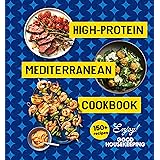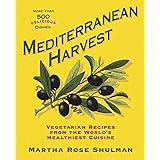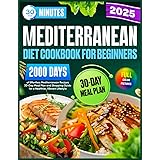Have you ever found yourself wishing for effective, yet simple and budget-friendly, strategies to manage your weight and boost your metabolism? Perhaps you’ve tried various diets, only to feel overwhelmed by complex rules or expensive ingredients. It’s a common experience for many, where the pursuit of health often seems to come with a hefty price tag or an intimidating learning curve. Yet, achieving sustainable fat loss and improving overall wellness doesn’t have to be a daunting task. As shared by Celebrity Nutritionist Ryan Fernando in the insightful video above, some of the most powerful changes you can make are already within your reach, right in the comfort of your home, and completely free of cost.
The essence of sustainable fat loss lies in adopting habits that are easy to integrate into your daily life. It is not about deprivation, but rather about smarter choices and better timing. This article will delve deeper into the actionable diet tips presented in the video, providing expanded insights and practical guidance to help you embark on a journey towards a healthier, leaner you without straining your wallet.
Embracing Strategic Meal Timing for Enhanced Fat Loss
The first powerful tip from Ryan Fernando revolves around a subtle but significant shift in your morning routine: pushing back breakfast by two hours and utilizing that window for exercise. This approach is more than just a simple time adjustment; it cleverly taps into your body’s natural metabolic processes. When you delay your first meal, particularly after an overnight fast, you are extending what is often referred to as a fasting window. This practice can have profound benefits for fat loss and metabolic health.
The Science Behind Delaying Breakfast
Upon waking, your body has typically been in a fasting state for several hours. By delaying breakfast, you effectively prolong this period. During this extended fast, your insulin levels remain low, which signals your body to tap into its fat stores for energy rather than relying on recently consumed carbohydrates. This metabolic switch, often associated with concepts like intermittent fasting, encourages your body to become more efficient at burning fat. It is akin to teaching your body to use its existing fuel reserves before restocking the tank.
Furthermore, incorporating exercise during this fasted state can amplify the fat-burning effect. When you engage in physical activity without immediate food intake, your body is compelled to draw even more heavily from stored fat for fuel. This can lead to a more pronounced calorie deficit and promote greater improvements in body composition over time. Imagine your body as a well-oiled machine; in a fasted state, it prioritizes burning the most accessible stored energy, which is fat.
What to Consume During Your Fasted Window
While delaying your meal, it is crucial to stay hydrated. As mentioned in the video, options like water or green tea are excellent choices. Water is fundamental for all bodily functions, including metabolism, and can help suppress hunger pangs. Green tea, on the other hand, contains catechins and caffeine, which are compounds known to subtly boost metabolism and enhance fat oxidation. These beverages provide hydration and potential metabolic advantages without breaking your fast or adding calories, making them perfect companions for your extended morning.
Optimizing Lunch: Doubling Down on Vegetables and Daal
Ryan Fernando’s second impactful recommendation focuses on the composition of your lunch: doubling your portion of vegetables and daal while halving your rice and roti. This seemingly simple adjustment is a cornerstone of effective healthy eating and sustainable weight management.
The Power of Fiber and Protein
Vegetables are nutritional powerhouses, packed with vitamins, minerals, and, critically, dietary fiber. Fiber is indigestible plant material that adds bulk to your meals, promoting feelings of fullness and satiety without contributing significant calories. It acts like a broom, sweeping through your digestive system, aiding regularity and fostering a healthy gut microbiome. When you double your vegetable intake, you naturally consume fewer calories while feeling more satisfied, preventing overeating later in the day. Think of fiber as the slow-release fuel that keeps you full and energized for longer.
Daal (lentils) is an excellent source of plant-based protein and complex carbohydrates. Protein is essential for building and repairing tissues, and it also plays a significant role in satiety. Including more daal in your lunch boosts your protein intake, which helps preserve muscle mass during weight loss and keeps your metabolism humming. The combination of fiber from vegetables and protein from daal creates a nutrient-dense meal that sustains energy levels and minimizes cravings.
Reducing Refined Carbohydrates
Conversely, reducing your portions of rice and roti (common staples in Indian cuisine) helps to lower your intake of refined carbohydrates. While these provide quick energy, they can also lead to rapid spikes in blood sugar, followed by crashes that leave you feeling hungry and lethargic. By halving these portions, you are essentially reducing the calorie density of your meal and mitigating those undesirable blood sugar fluctuations. This shift ensures your body relies more on the sustained energy from fiber and protein rather than quick sugars, leading to more stable energy and better fat burning.
The Sunset Rule: Early Dinner for Digestive Harmony
The third key insight from Ryan Fernando is to finish your dinner before sunset and then opt for a warm peppermint or chamomile tea afterwards. This tip aligns with ancient wisdom and modern chrononutrition, emphasizing the importance of meal timing for optimal digestion and metabolic function.
Synchronizing with Your Circadian Rhythm
Your body operates on an internal clock, known as the circadian rhythm, which influences various physiological processes, including metabolism and digestion. Eating late in the evening, when your body is naturally winding down, can disrupt these processes. Your digestive system is less efficient at night, meaning that food consumed closer to bedtime may not be adequately processed. This can lead to issues like indigestion, acid reflux, and a tendency for calories to be stored as fat rather than efficiently burned for energy.
By concluding your dinner before sunset, you allow your body ample time to digest food and absorb nutrients before it shifts into its restorative sleep phase. This promotes better digestion, reduces overnight metabolic strain, and can significantly improve sleep quality. Imagine your body’s digestive system like a factory that slows down production as the day ends; an early dinner means the factory can process its last batch efficiently before closing for the night.
The Calming Benefits of Herbal Teas
Following dinner with a warm cup of peppermint or chamomile tea is a delightful and beneficial practice. Peppermint tea is renowned for its digestive properties, helping to soothe an upset stomach, alleviate bloating, and aid the flow of bile, which is crucial for fat digestion. Chamomile tea, conversely, is celebrated for its calming and sleep-inducing effects. It can help relax your body and mind, preparing you for a restful night’s sleep—a critical component of any healthy lifestyle and weight loss journey, as poor sleep can disrupt hormones related to hunger and satiety.
The Bonus Tip: Walk and Talk for Post-Meal Wellness
Finally, Ryan Fernando offers a simple yet profoundly effective bonus tip: take a 15-minute walk and talk after your meals to burn more calories. This practice is an excellent example of how small, consistent efforts can yield significant results in your weight management and overall well-being.
Gentle Movement, Big Impact
Engaging in light physical activity after eating can have several advantages. Firstly, it aids digestion. Gentle movement helps stimulate the muscles in your digestive tract, facilitating the movement of food through your system and reducing feelings of fullness or sluggishness. Secondly, a post-meal walk can help regulate blood sugar levels. Instead of a sharp spike, which often occurs after a meal, even a short walk can help your muscles utilize glucose, thereby preventing excessive blood sugar elevation. This is particularly beneficial for managing energy levels and reducing the likelihood of subsequent cravings.
The Social and Mental Aspect of “Walk and Talk”
The “walk and talk” component adds a valuable dimension beyond just calorie burning. It encourages social interaction, which can be a powerful stress reducer and mood enhancer. Connecting with family or friends while moving creates a positive association with physical activity, making it feel less like a chore and more like an enjoyable part of your day. This mental and emotional uplift can contribute significantly to a sustainable healthy habits routine. It’s a wonderful way to wind down, reflect on your day, and prepare for what comes next, all while subtly boosting your metabolism and contributing to your fat loss goals. These straightforward diet tips for fat loss truly demonstrate that consistency and mindful adjustments are more powerful than drastic measures.











